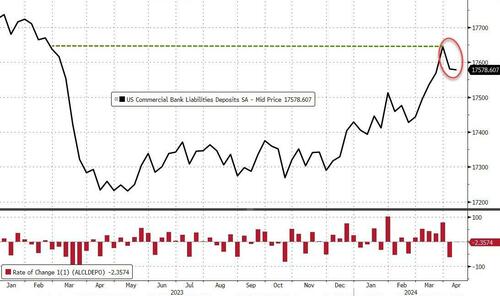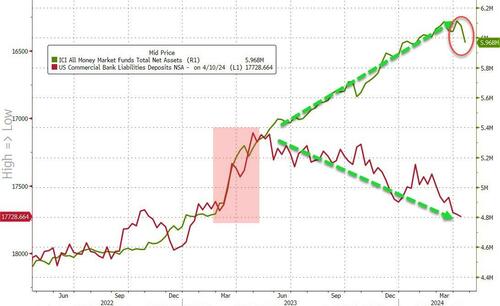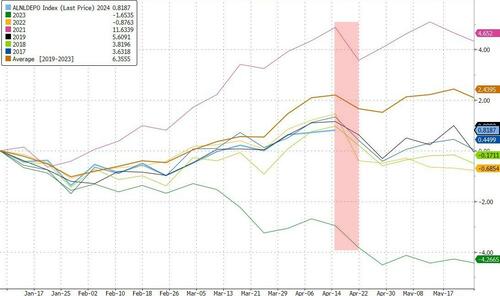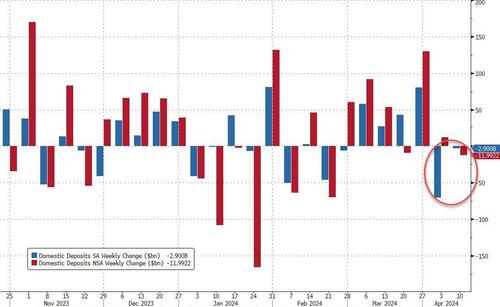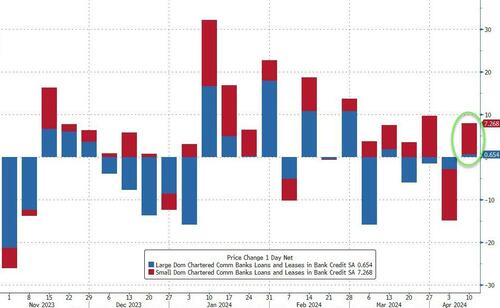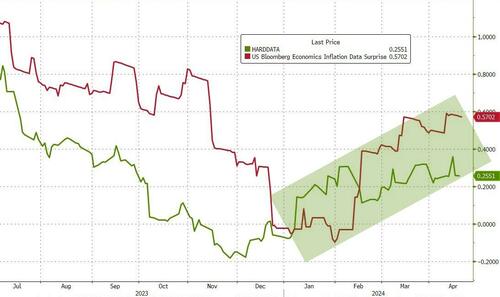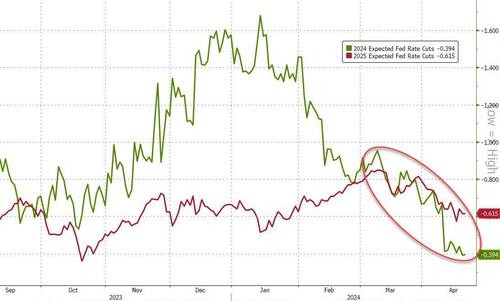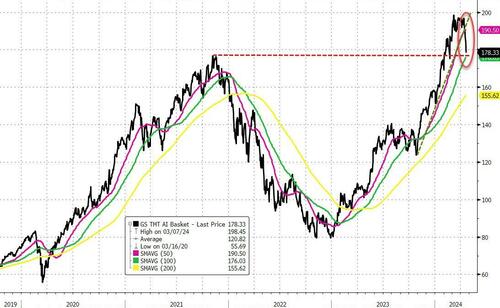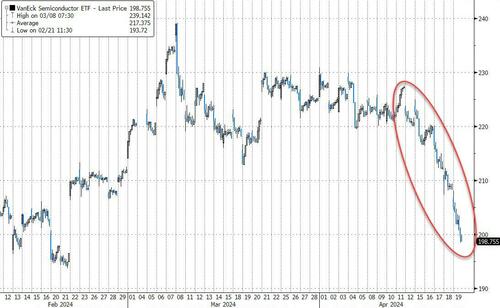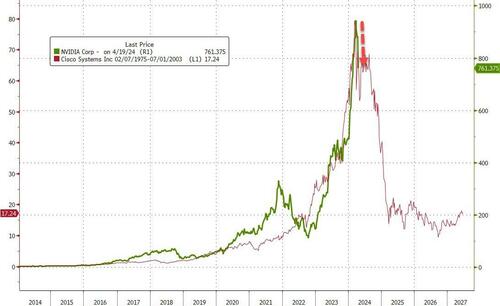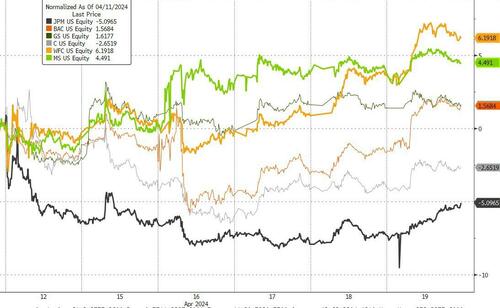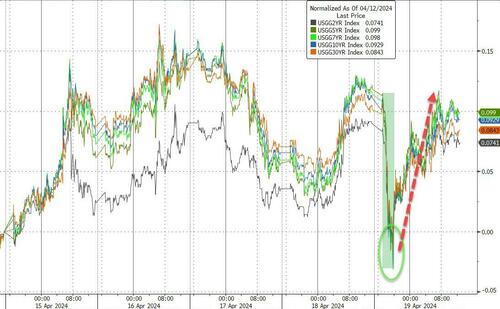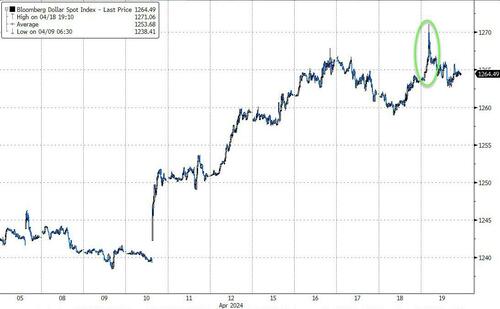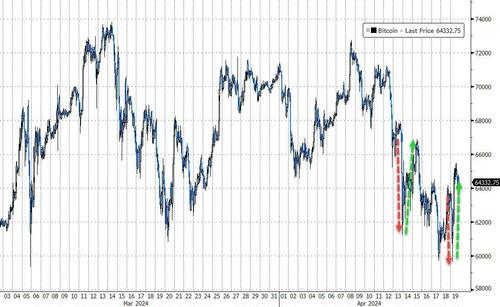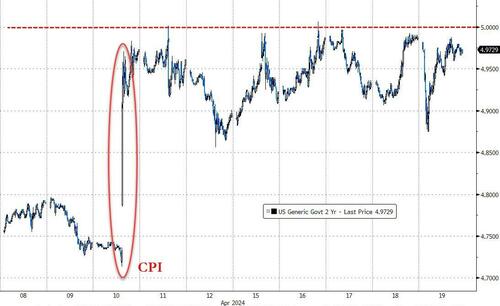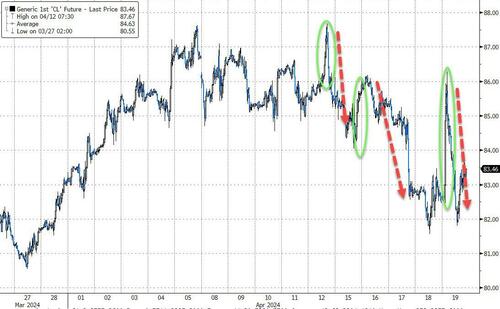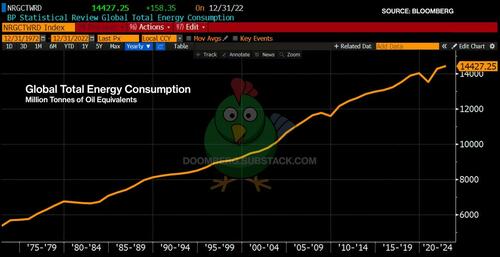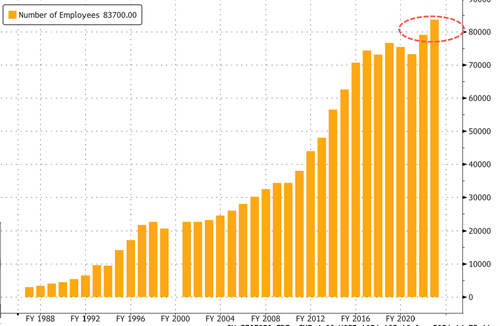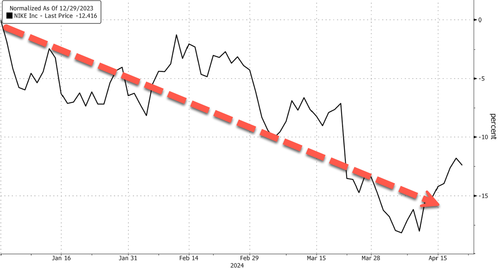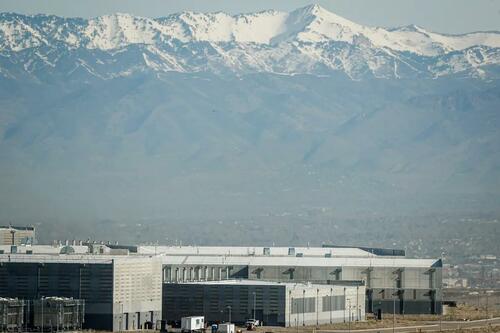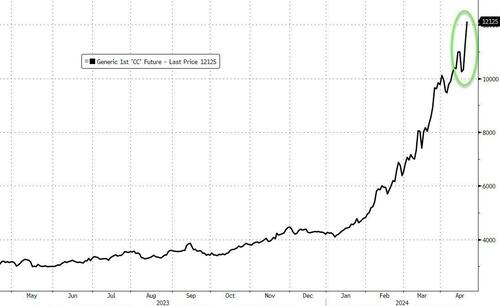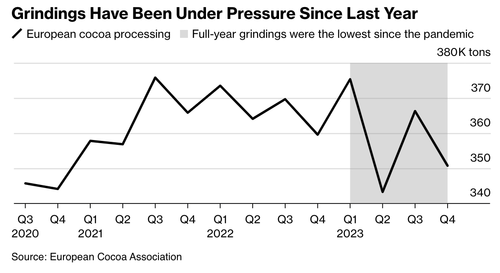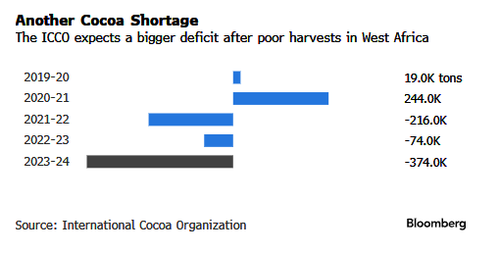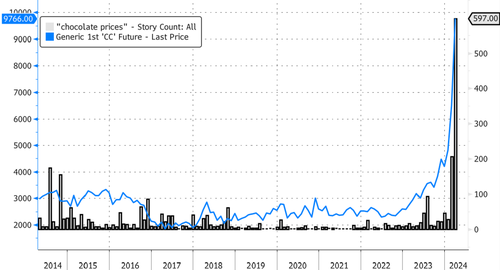Authored by John and Nisha Whitehead via The Rutherford Institute,
“Whether he wrote DOWN WITH BIG BROTHER, or whether he refrained from writing it, made no difference … The Thought Police would get him just the same … the arrests invariably happened at night … In the vast majority of cases there was no trial, no report of the arrest. People simply disappeared, always during the night. Your name was removed from the registers, every record of everything you had ever done was wiped out, your one-time existence was denied and then forgotten. You were abolished, annihilated: vaporized was the usual word.”
– George Orwell, 1984
The government long ago sold us out to the highest bidder.

The highest bidder, by the way, has always been the Deep State.
What’s playing out now with the highly politicized tug-of-war over whether Section 702 of the Foreign Intelligence Surveillance Act gets reauthorized by Congress doesn’t just sell us out, it makes us slaves of the Deep State.
Read the fine print: it’s a doozy.
Just as the USA Patriot was perverted from its stated intent to fight terrorism abroad and was instead used to covertly crack down on the American people (allowing government agencies to secretly track Americans’ financial activities, monitor their communications, and carry out wide-ranging surveillance on them), Section 702 has been used as an end-run around the Constitution to allow the government to collect the actual content of your conversations (phone calls, text messages, video chats, emails and other electronic communication) without a warrant.
Now intelligence officials are pushing to dramatically expand the government’s spying powers, effectively giving the government unbridled authority to force millions of Americans to spy on its behalf.
Basically, the Deep State wants to turn the American people into extensions of Big Brother.
As Sen. Ron Wyden (D-Ore.) explains:
“If you have access to any communications, the government can force you to help it spy. That means anyone with access to a server, a wire, a cable box, a Wi-Fi router, a phone, or a computer. So think for a moment about the millions of Americans who work in buildings and offices in which communications are stored or pass through.
After all, every office building in America has data cables running through it. The people are not just the engineers who install, maintain, and repair our communications infrastructure; there are countless others who could be forced to help the government spy, including those who clean offices and guard buildings. If this provision is enacted, the government can deputize any of these people against their will, and force them in effect to become what amounts to an agent for Big Brother—for example, by forcing an employee to insert a USB thumb drive into a server at an office they clean or guard at night.
This could all happen without any oversight whatsoever: The FISA Court won’t know about it, Congress won’t know about it. Americans who are handed these directives will be forbidden from talking about it. Unless they can afford high-priced lawyers with security clearances who know their way around the FISA Court, they will have no recourse at all.”
This is how an effort to reform Section 702 has quickly steamrollered into an expansion of the government’s surveillance powers.
We should have seen this coming.
After all, the Police State doesn’t relinquish power easily, the Surveillance State doesn’t look favorably on anything that might weaken its control, and Big Brother doesn’t like to be restricted.
What most Americans don’t get is that even without Section 702 in play, the government will still target the populace for warrantless, suspicionless mass surveillance, because that’s how the police state maintains its stranglehold on power.
These maneuvers are just the tip of the iceberg.
For all intents and purposes, we now have a fourth branch of government.
This fourth branch came into being without any electoral mandate or constitutional referendum, and yet it possesses superpowers, above and beyond those of any other government agency save the military.
It is all-knowing, all-seeing and all-powerful.
It operates beyond the reach of the president, Congress and the courts, and it marches in lockstep with the corporate elite who really call the shots in Washington, DC.
The government’s “technotyranny” surveillance apparatus has become so entrenched and entangled with its police state apparatus that it’s hard to know anymore where law enforcement ends and surveillance begins. They have become one and the same entity.
The police state has passed the baton to the surveillance state.
On any given day, the average American is now monitored, surveilled, spied on and tracked in more than 20 different ways by both government and corporate eyes and ears.
Every second of every day, the American people are being spied on by the U.S. government’s vast network of digital Peeping Toms, electronic eavesdroppers and robotic snoops.
Beware of what you say, what you read, what you write, where you go, and with whom you communicate, because it will all be recorded, stored and used against you eventually, at a time and place of the government’s choosing.
Privacy, as we have known it, is dead.
Whether you’re walking through a store, driving your car, checking email, or talking to friends and family on the phone, you can be sure that some government agency is listening in and tracking you. This doesn’t even begin to touch on the complicity of the corporate sector, which buys and sells us from cradle to grave, until we have no more data left to mine. These corporate trackers monitor your purchases, web browsing, Facebook posts and other activities taking place in the cyber sphere and share the data with the government.
Just about every branch of the government—from the Postal Service to the Treasury Department and every agency in between—now has its own surveillance sector, authorized to collect data and spy on the American people. Then there are the fusion and counterterrorism centers that gather all of the data from the smaller government spies—the police, public health officials, transportation, etc.—and make it accessible for all those in power.
These government snoops are constantly combing through and harvesting vast quantities of our communications, then storing it in massive databases for years. Once this information—collected illegally and without any probable cause—is ingested into NSA servers, other government agencies can often search through the databases to make criminal cases against Americans that have nothing to do with terrorism or anything national security-related.
Empowered by advances in surveillance technology and emboldened by rapidly expanding public-private partnerships between law enforcement, the Intelligence Community, and the private sector, police have become particularly adept at sidestepping the Fourth Amendment.
Talk about a system rife for abuse.
Now, the government wants us to believe that we have nothing to fear from its mass spying program because they’re only looking to get the “bad” guys who are overseas.
Don’t believe it.
The government’s definition of a “bad” guy is extraordinarily broad, and it results in the warrantless surveillance of innocent, law-abiding Americans on a staggering scale.
Indeed, the government has become the biggest lawbreaker of all.
It’s telling that even after it was revealed that the FBI, one of the most power-hungry and corrupt agencies within the police state’s vast complex of power-hungry and corrupt agencies, misused a massive government surveillance database more than 300,000 times in order to target American citizens, we’re still debating whether they should be allowed to continue to sidestep the Fourth Amendment.
This is how the government operates, after all: our objections are routinely overruled and our rights trampled underfoot.
It works the same every time.
First, the government seeks out extraordinary powers acquired in the wake of some national crisis—in this case, warrantless surveillance powers intended to help the government spy on foreign targets suspected of engaging in terrorism—and then they use those powers against the American people.
According to the Foreign Intelligence Surveillance Court, the FBI repeatedly misused Section 702 in order to spy on the communications of two vastly disparate groups of Americans: those involved in the George Floyd protests and those who may have taken part in the Jan. 6, 2021, protests at the Capitol.
This abuse of its so-called national security powers is par for the course for the government.
According to the Brennan Center for Justice, intelligence agencies conduct roughly 200,000 of these warrantless “backdoor” searches for Americans’ private communications each year.
No one is spared.
Many of the targets of these searches have done nothing wrong.
Government agents have spied on the communications of protesters, members of Congress, crime victims, journalists, and political donors, among many others.
The government has claimed that its spying on Americans is simply “incidental,” as though it were an accident, but it fully intends to collect this information.
As journalist Jake Johnson warns, under an expanded Section 702, U.S. intelligence agencies “could, without a warrant, compel gyms, grocery stores, barber shops, and other businesses to hand over communications data.”
According to the Wall Street Journal, “The Securities and Exchange Commission is deploying a massive government database—the Consolidated Audit Trail, or CAT—that monitors in real time the identity, transactions and investment portfolio of everyone who invests in the stock market.”
Journalist Leo Hohmann reports that the government is also handing out $20 million in grants to police, mental health networks, universities, churches and school districts to enlist their help in identifying Americans who might be political dissidents or potential “extremists.”
Ask the government why it’s carrying out this far-reaching surveillance on American citizens, and you’ll get the same Orwellian answer the government has been trotting in response to every so-called crisis to justify its assaults on our civil liberties: to keep America safe.
What this is really all about, however, is control.
What we are dealing with is a government so power-hungry, paranoid and afraid of losing its stranglehold on power that it is conspiring to wage war on anyone who dares to challenge its authority.
When the FBI is asking banks and other financial institutions to carry out dragnet searches of customer transactions—warrantlessly and without probable cause—for “extremism” indicators broadly based on where you shop, what you read, and how you travel, we’re all in trouble.
You don’t have to do anything illegal.
For that matter, you don’t even have to challenge the government’s authority.
Frankly, you don’t even have to care about politics or know anything about your rights.
All you really need to do in order to be tagged as a suspicious character, flagged for surveillance, and eventually placed on a government watch list is live in the United States.
As long as the government is allowed to weaponize its 360 degree surveillance technologies to flag you as a threat to national security, whether or not you’ve done anything wrong, it’s just a matter of time before you find yourself wrongly accused, investigated and confronted by police based on a data-driven algorithm or risk assessment culled together by a computer program run by artificial intelligence.
As I make clear in my book Battlefield America: The War on the American People and in its fictional counterpart The Erik Blair Diaries, it won’t be long before Big Brother’s Thought Police are locking us up to “protect us” from ourselves.
At that point, we will disappear.
